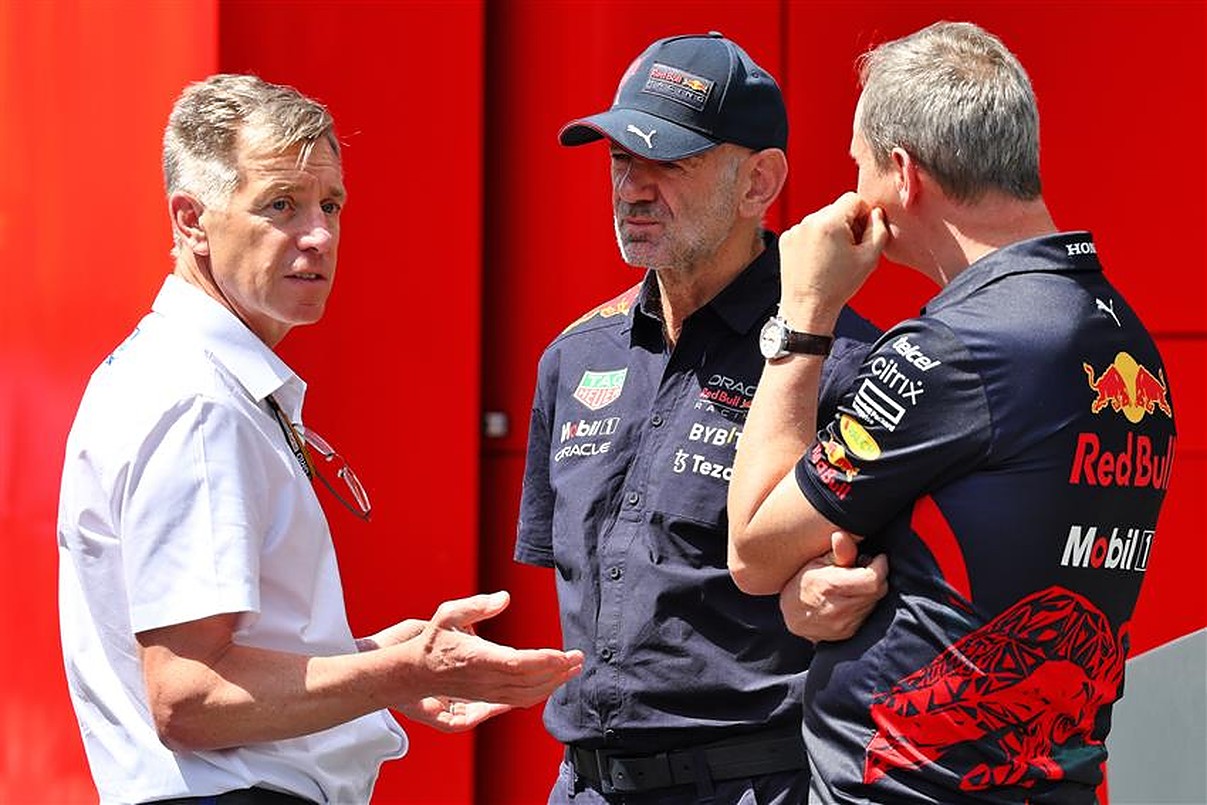The new era of Formula 1 has so far produced brilliant racing, with drivers able to overtake more often and run closer to one another.
However, famous engineer and Red Bull Racing’s chief technical officer Adrian Newey believes the sport went the wrong way when introducing the new regulations.
The new regulations were brought in mainly to improve overtaking during the race, with cars traditionally in the past being unable to run close together.
Newey explained how the new rules which as mentioned were to increase the number of overtakes, aren’t making a “significant change” to this year’s racing.
READ: Aston Martin ‘a good choice’ for Schumacher as another Ferrari junior could replace him at Haas
“I think the principle of helping cars to overtake by reducing the sensitivity of the following car to the one in front is fine,” Newey told Motorsport Magazin.
“I think it helps to be able to overtake a little better. I don’t think it’s a significant change but it will help a little.
“If you make such a significant rule change, which inevitably brings with it many other changes, then it will probably lead to the field expanding further in the first few seasons.”
Newey’s biggest concern is the weight of Formula 1 cars, which is following the current trend of what’s happening on the road.
F1 cars like road cars, are becoming much heavier with the current machinery weighing an unimaginable amount.
Newey insisted that the sport went the wrong direction with the rule changes, and that “smaller, lighter” cars are needed soon.
“In just a few years, the weight limit has increased from a low 600kg and 30-40kg of ballast on board to cars with 800kg and more,” he explained.
“And we are all working like crazy to make that happen to achieve the currently prescribed minimum weight. In short, the cars have become bigger and heavier and not particularly aerodynamically efficient because they have a lot of air resistance.
“Obviously this wrong direction is the same in which the general automotive industry has recently developed – ever larger and heavier cars and the people’s obsession, whether they drive on batteries or on gas, the biggest issue is the amount of energy it takes to move the damn thing, regardless of where that energy comes from.
“Obviously some of the safety issues become a self-reinforcing issue. The heavier the car, the stronger it needs to be.
“In my opinion, we need smaller, lighter and more energy-efficient cars,” Newey concluded.

